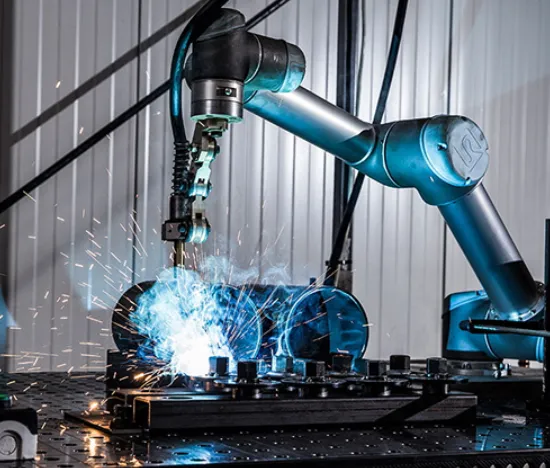Maintaining a welding robot properly is essential to extending its lifespan and ensuring optimal performance. Regular maintenance not only helps prevent unexpected downtimes but also ensures that the system runs smoothly. Simple maintenance tasks, such as checking cables, replacing welding gun tips, and inspecting nozzles, can significantly improve the efficiency and longevity of your robotic welding system.
Why Preventative Maintenance is Crucial
Robotic technology has transformed manufacturing, particularly in industries like automotive, where it’s revolutionized production processes. Tasks that once required manual labor for an entire day can now be completed in a fraction of the time thanks to robotic systems. With these robots running around the clock, keeping them in top working condition is essential. Proper preventative maintenance ensures the robot continues to perform efficiently and without interruption.
Welding robots are built to operate tirelessly, often running 24/7, making regular maintenance a key factor in sustaining peak performance. However, it’s important to strike the right balance. Over-maintenance, such as excessive greasing, can be as harmful as neglecting the system entirely. By following a well-structured maintenance plan, you can avoid both extremes and keep the system functioning at its best.
Enhancing Productivity and Minimizing Downtime
The foundation of any reliable robotic welding system is its maintenance schedule. Regular upkeep minimizes the risk of breakdowns, which can lead to production delays and increased costs. Consistent maintenance not only prevents costly repairs but also extends the robot’s operational life, providing greater return on investment over time.
Key Preventative Maintenance Tasks for Welding Robots
Here are a few essential maintenance tasks to include in your regular schedule to ensure optimal robot performance:
Weekly Replacement of the Welding Liner
The welding liner is one of the most frequently worn components in a robotic welding system. For companies operating a robot on multiple shifts, it’s crucial to replace the welding liner weekly. Doing so helps eliminate defects during production and ensures consistent, high-quality welds. This simple step can drastically improve the overall performance and output of the system.
Cable Inspections
Inspect cables regularly to ensure they are not dragging, rubbing against clamps, or touching other parts of the welding cell. These issues can lead to costly maintenance problems if left unaddressed. Ensure that all cables are secured properly to prevent excessive wear and tear. Replacing worn cables and ensuring proper cable management can save time and money in the long run.
Daily Welding Gun Tip and Nozzle Checks
Welding gun tips should be replaced daily to maintain consistent performance. In addition to replacing tips, inspect the welding nozzle for any buildup of weld spatter. This buildup can interfere with the welding process and affect the quality of the welds. A fresh contact tip and regular nozzle cleaning are simple tasks that can prevent defects and ensure smooth operation.
Shielding Gas Leak Detection
Use soap bubbles to check for leaks in the shielding gas system. Even small leaks can compromise the welding process, so it’s essential to address any issues promptly. Ensuring that the shielding gas system is functioning properly contributes to a seamless welding experience and helps avoid costly production delays.
Unlocking the Full Potential of Robotic Welding Systems
In conclusion, regular preventative maintenance is the key to unlocking the full potential of your welding robot. By following a structured maintenance schedule, you can keep the robot operating at peak efficiency for years to come. Not only will this enhance productivity and reduce downtime, but it will also protect your investment in robotic technology. A well-maintained robotic welding system delivers consistent, high-quality results while minimizing the need for costly repairs and replacements.







